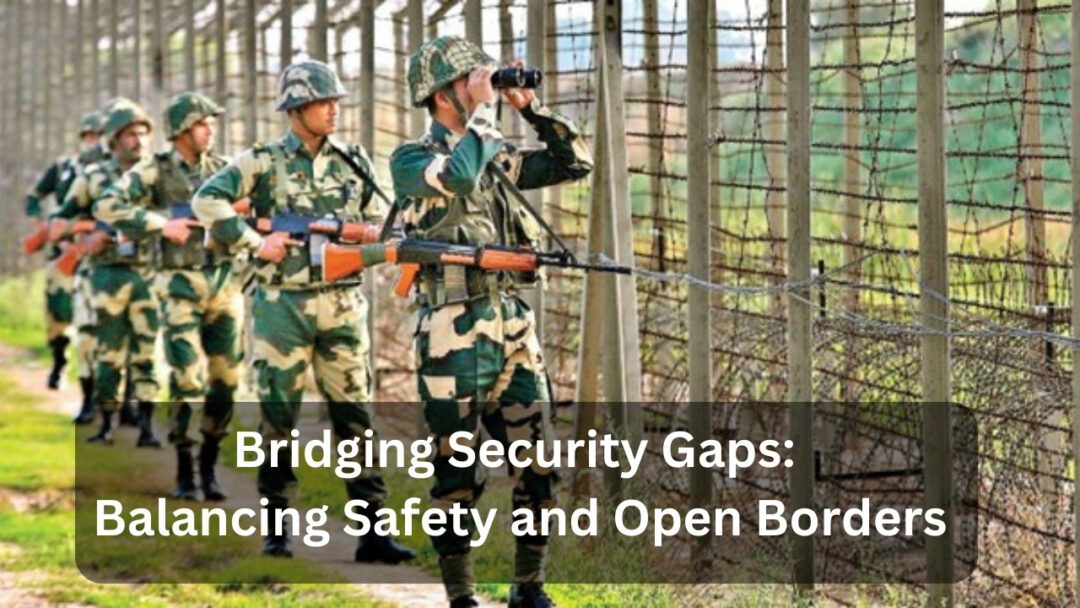Bridging Security Gaps: Balancing Safety and Open Borders

In our increasingly interconnected world, the concept of open borders has gained momentum. It reflects the aspirations of globalization, where goods, services, and ideas flow freely across national boundaries. However, the pursuit of open borders also brings about complex security challenges. Balancing the desire for openness with the need for safety is a delicate task that requires thoughtful consideration and innovative solutions. This essay explores the critical issue of bridging security gaps in the context of open borders, highlighting the challenges, the potential benefits, and strategies to achieve this delicate balance.

The Promise of Open Borders
Open borders represent an ideal situation wherein people, goods, and ideas can move freely across national boundaries without unnecessary hindrance; this concept is rooted in the belief that facilitating cross border interactions fosters economic growth, cultural exchange, and international cooperation. Advocates of open borders argue that they lead to several potential benefits:
- Economic growth: Open borders promote the efficient allocation of resources, allowing businesses to tap into global markets and consumers to access a wider variety of goods and services. This can spur economic growth and reduce poverty.
- Cultural Exchange: Open borders encourage cultural exchange, leading to a richer and more diverse global society. Exposure to different cultures fosters tolerance and understanding, reducing the potential for conflicts rooted in ignorance and misunderstanding.
- International Cooperation: Countries with open borders often cooperate more closely on various issues, including trade, environmental protection, and disaster relief. This can enhance global stability and cooperation.
However, while the promise of open borders is enticing, the reality is more complex due to the security challenges it poses.
(Read More: Indo-China-Pak Trilateral Relations and India’s Future Prospects)
The Security Dilemma
Open borders inevitably create security gaps that can be exploited by individuals or groups with malicious intent. The security dilemma arises from the need to simultaneously ensure the safety and security of a nation while embracing the ideals of openness and free movement.
- Terrorism: Open borders can facilitate the movement of terrorists across borders. Terrorist attacks in various countries have underscored the importance of maintaining robust security measures.
- Transnational crime: Criminal organizations often take advantage of open borders to engage in activities such as drug trafficking, human smuggling, and money laundering. These activities threaten the stability and security of nations.
- Public health: The movement of people across borders can also lead to the spread of diseases, as seen in the case of the COVID-19 pandemic. Balancing open borders with public health concerns is a pressing challenge.
- Illegal immigration: Open borders may lead to increased levels of illegal immigration, which can strain social services, impact labor markets, and raise security concerns.
Bridging Security Gaps
Achieving a balance between the desire for open borders and the need for security requires a multifaceted approach. Here are some strategies to bridge security gaps effectively:
- Advanced technology: Investing in advanced technology, such as biometrics, artificial intelligence, and data analytics, can enhance border security without compromising the free flow of people and goods. These technologies can help identify potential threats while expediting legitimate travel and trade.
- International cooperation: Security challenges often transcend borders, necessitating international cooperation. Collaborative efforts among nations can lead to the sharing of intelligence, joint border patrols, and coordinated responses to security threats.
- Risk-based approaches: Implementing risk-based approaches to border security allows authorities to focus resources on high-risk individuals and shipments while facilitating the movement of low-risk travelers and goods. This approach enhances security without creating unnecessary barriers.
- Enhanced screening and vetting: Strengthening background checks and vetting procedures for travelers and immigrants can help identify potential security threats. However, these processes should be efficient and nondiscriminatory to avoid unnecessary delays and infringements in civil liberties.
- Infrastructure Investment: Developing modern and efficient border infrastructure can improve security while promoting the flow of people and goods. This includes investments in border crossings, customs facilities, and transportation networks.
- Public-private partnerships: Engaging the private sector in border security efforts can lead to innovation and efficiency. Technological companies, logistics firms, and transportation providers can contribute valuable resources and expertise.
- Humanitarian considerations: When addressing the issue of illegal immigration, it’s essential to consider humanitarian factors. Policies should be designed to address the root causes of migration while respecting the rights of migrants and refugees.
- Public awareness and education: Educating the public about the benefits and challenges of open borders can foster support for balanced security measures. Informed citizens are more likely to accept necessary security measures while advocating for the principles of openness.
Conclusion
The pursuit of open borders is a noble goal, as it can foster economic growth, cultural exchange, and international cooperation. However, the security challenges associated with open borders cannot be ignored. Balancing safety with openness requires a strategic and multidimensional approach, encompassing advanced technology, international cooperation, risk-based methods, infrastructure investment, and public awareness.
Ultimately, the goal is to create a world where open borders are not seen as a security threat but as an opportunity for progress and collaboration. By implementing effective security measures while upholding the principles of freedom and openness, nations can bridge security gaps and move closer to achieving this delicate balance. It is a challenging endeavor, but one that is essential for our interconnected and interdependent global community to thrive.


Leave a Reply